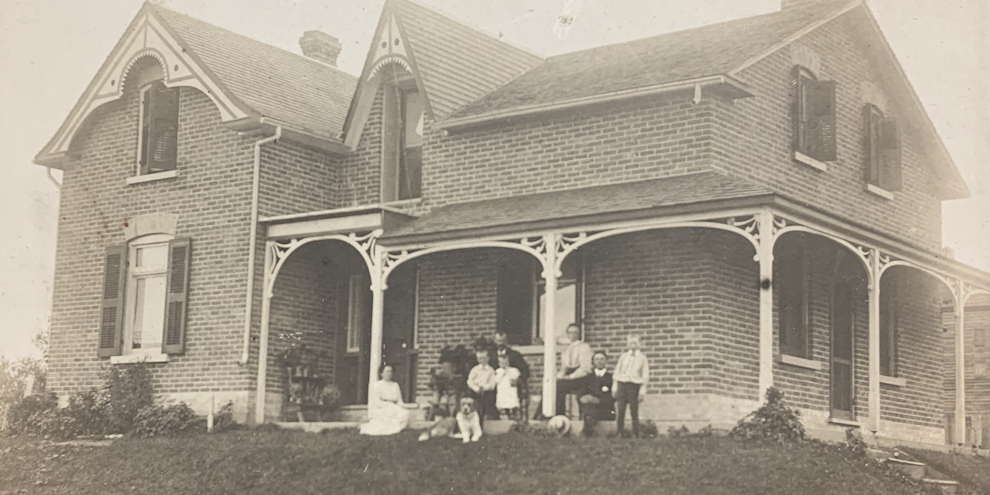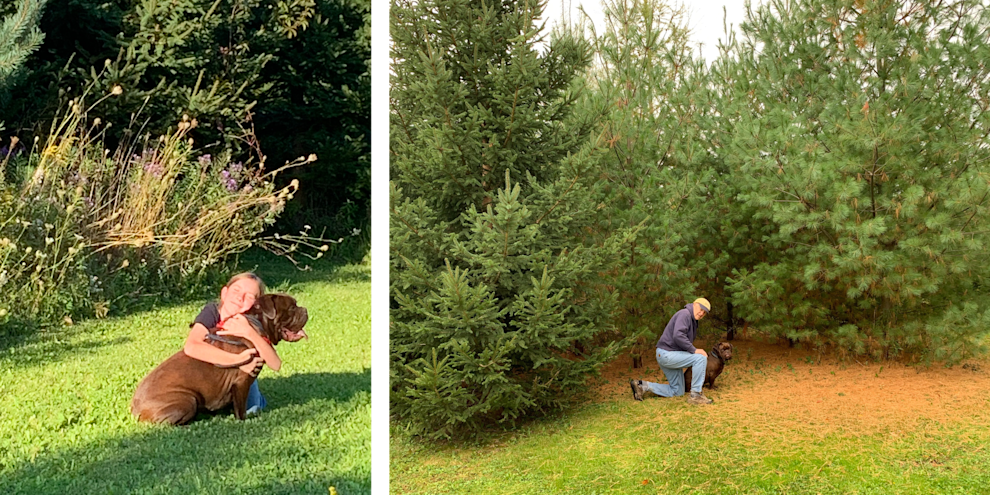Trees Company Blog
Green Leaders: John and Betty Ann Asher Plant a Lasting Legacy
Posted: 2024.04.18
Trees Company Blog
Posted: 2024.04.18
By Andi Darell Alhakim
“There’s a certain freshness, sweetness, and calmness when you breathe the air out here,” John says of his forest 50 kilometres northwest of Richmond Hill. “It’s a different, indescribable feeling that you can’t get anywhere in the city.”
John’s admiration for the forest sparked a desire and commitment to improve his natural surroundings, actions he knows will be enjoyed by generations to come. “I’m now sitting by my front window and looking at my Tamaracks, which are 25-30 feet high. It was just a few years ago that you’d be bigger than them as you walk past. Now, they’re proper bush size,” John says.
He also describes his favourite spot at the farmhouse. “It’s raining now, and out on the back steps, you can just smell that sweetness and see all the greenery. You can’t help but be immersed in it.”
It certainly takes a lot of love and dedication to have 45,000 trees planted on your property. John and Betty Ann, two of Forests Ontario’s newest Green Leaders, had always envisioned a larger environmental role for their property. That dream came true thanks to four years of participation in the 50 Million Tree Program.

The Asher property was part of an original homestead granted by the province of Upper Canada to Betty Ann’s family, the Kellys, immigrants from Ireland. At the time, the British Crown took control of significant Indigenous territory and was granting this land to settlers for cultivation. The Kellys received 100 acres in 1826, and over the subsequent decades increased it to 350 acres.
As happened in much of Southern Ontario, the settlers of two centuries ago set out to cut down most of the existing trees to clear the land for farming. “In fact, the original homesteader, Hugh Kelly, was killed in 1829 as he was cutting down a tree to build the local church,” John shares.
Betty Ann had been living on the farm before her 1968 wedding to John, a secondary school educator. After the pair wed, the couple built a second farmhouse together. They shared a deep desire to someday reforest the property back to its natural state.
The land had been farmed and taken care of by Betty Ann’s father, Francis Kelly, until the late 1980s when he retired at 87. Ownership passed on to her and her city-dwelling siblings and the property was eventually put up for sale in the early 2000s when John and Betty Ann jumped at the opportunity to purchase the farm from them. “We used it occasionally for recreation with the grandkids. It was mostly rented out to farmers and in production, so you couldn’t go on it to truly enjoy it,” John recalls.
Having briefly moved away during this period, the Ashers eventually returned as their daughter Elizabeth wanted to live on the property with her own children, Oscar and Ashley, and her husband Justin. “Now we see them most every day,” John says. The property has always been a family affair. “My grandkids are the seventh generation living here,” he adds.

The Ashers decided to reforest in 2010 after seeing much global coverage on deforestation and environmental pollution. “Why should I only consume oxygen if I can help produce it? It’s the same with carbon,” John reflects. He and Betty Ann contacted the Nottawasaga Valley Conservation Authority and were connected with Rick Grillmayer, their Manager of Forestry, who directed them to Forests Ontario’s 50 Million Tree Program.
“Rick’s the expert. I told him that I wanted to reforest the property back to how it looked before all the farming. We worked together on a site plan and found which tree species would work well in the area,” John says. “He even made sure that our tenant planted certain crops during that final year of farming to ensure healthy, fertile soil for our tree planting the following year.”
The property now boasts an impressive tree lineup. “Sprinkled throughout our conifers are hardwoods,” John says. “We have Red Oaks, Pin Oaks, Black Cherry, Hackberry, and a lot of Black Walnut. We also have Tamaracks, which look wonderful in November as their bright yellow go against the green backdrop of spruce and pine.”
Since planting started in 2011, the Ashers have seen diverse wildlife come to their property, including wild turkeys, geese, deer, squirrels, ducks, rabbits, coyotes, foxes, robins, cardinals, and blue jays. “My walnuts are getting big enough that the squirrels always take them, while the deer tend to nibble at the Hackberry and oaks,” John says.
With all its benefits, the Ashers credit Forests Ontario’s 50 Million Tree Program for making reforestation feasible in the first place. “It’s a great incentive for landowners to do good,” John says. “The return you get from it increases every year as your new forest grows. You also get a tax rate that reflects this,” John adds, referencing the province’s Managed Forest Tax Incentive Program.
John has some advice for interested landowners. “First, talk to your local conservation authority. Don’t have certain expectations yet. They’ll come do a site survey and share what the possibilities are for your property,” he says. In his experience, letting the thought simmer for a year or so has its benefits.
Reforestation is how he and Betty Ann do their part. “The serenity you feel when wandering through a bush is unparalleled,” John says. “As you get older, you start thinking about legacy. Most would want to create something positive for their family but also the broader community and the environment. It’s just our natural inclination.”
As John walks along his dense forest, he thinks back on Hugh Kelly’s story and suggests that his wife’s family, the Kellys, have been “Green Leaders” for 200 years. “They had respect for the land and what it could produce,” he says. While trees had been cut down on the property to grow their crops and feed their livestock, the Kellys also owned bush property used as a cool refuge for cattle in the hot summer. Wood from their trees was used to build the farmhouse, at least four barns, outbuildings, and all of the split rail fences on the farm.
Each generation considered themselves stewards as they maintained the bush for future generations. “And so, I guess Betty Ann and I are now stewards since 2000 for the 6th and 7th generations.”
The financial and technical support the program provides helps landowners do a world of good for their communities and the environment.
“Our 50 Million Tree Program participants often exemplify what Green Leaders are,” says Jess Kaknevicius, Forests Ontario CEO. “They’re dedicated landowners eager to make a difference, care for their new trees as they grow into healthy diverse forests and inspire others in the process.”
This article was originally published in the Fall-Winter 2023 edition of Our Forest, Forests Ontario's print magazine delivered as a benefit for Members.